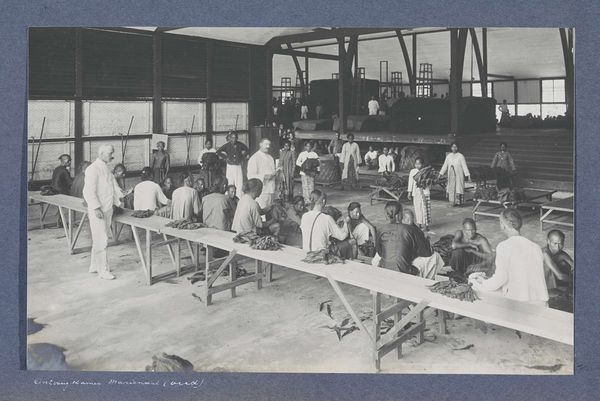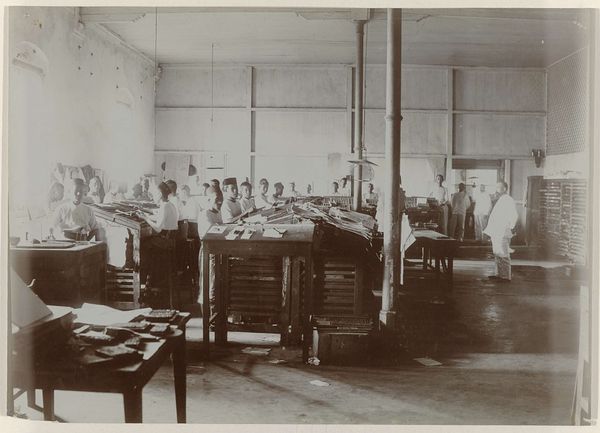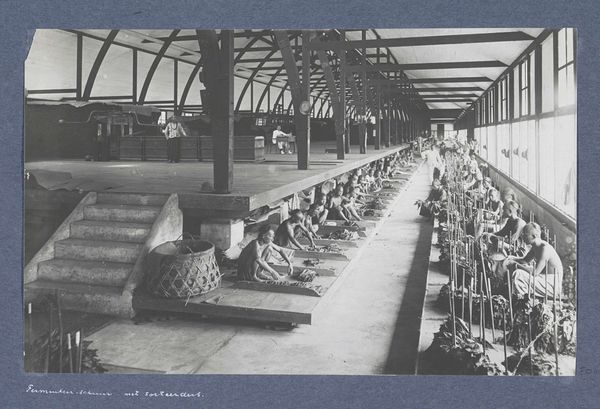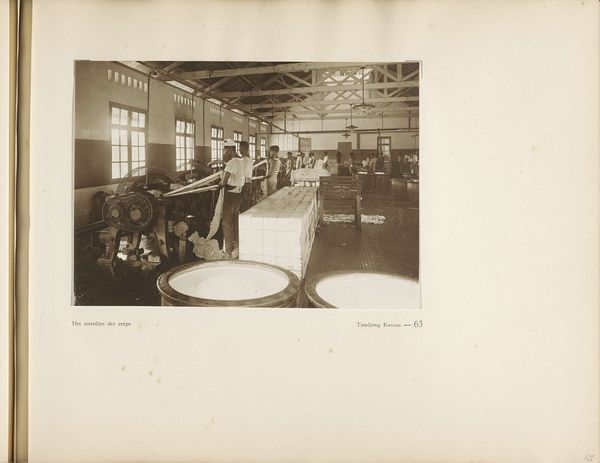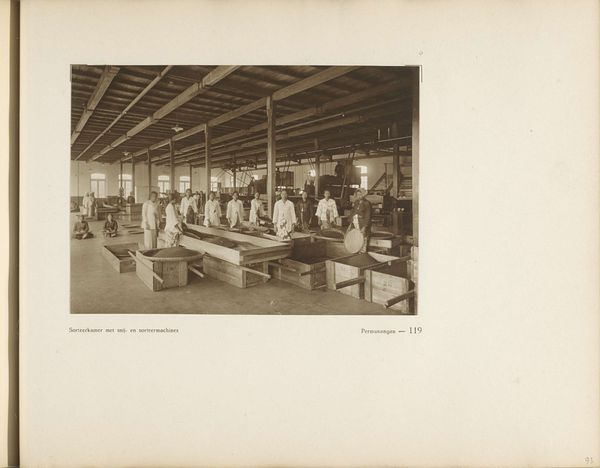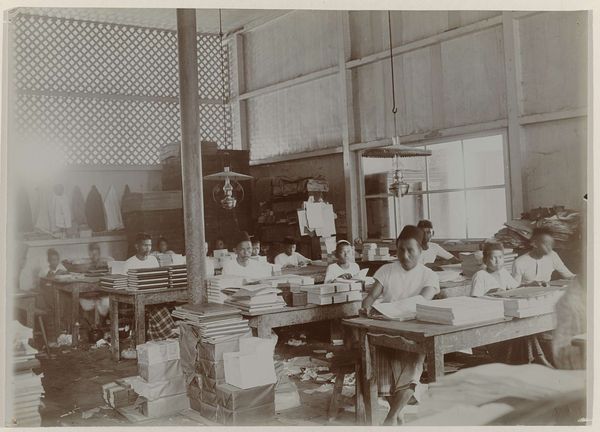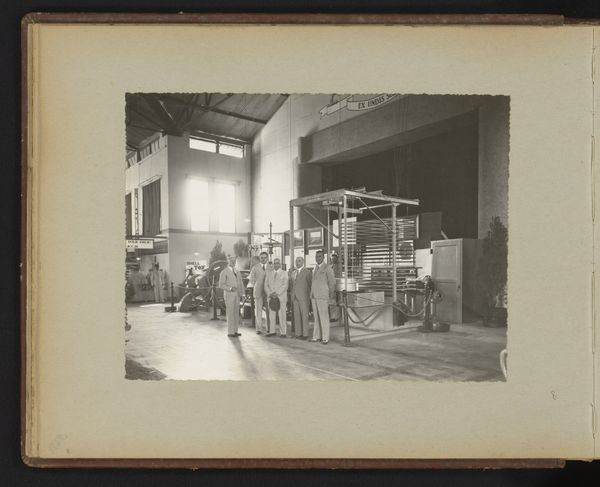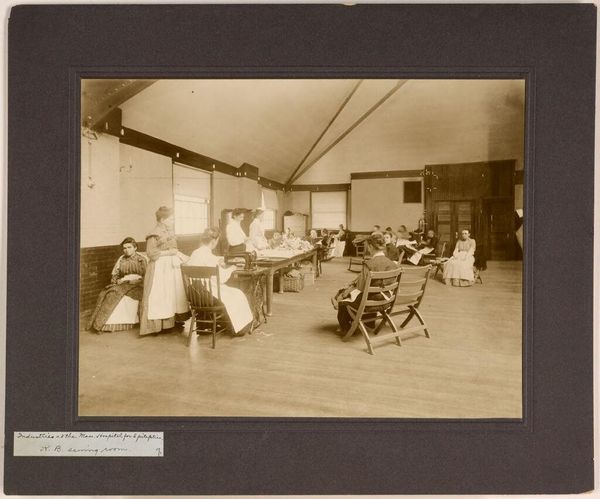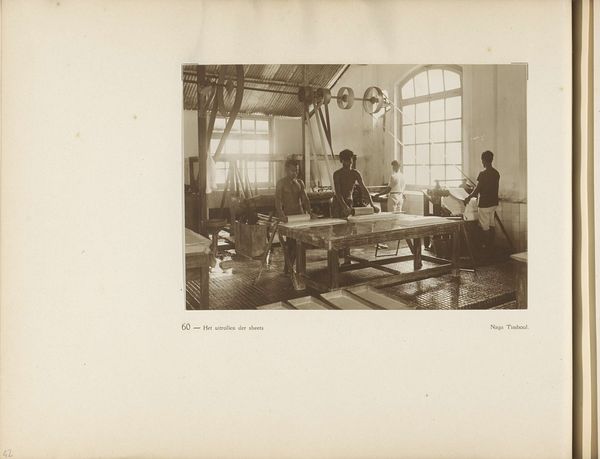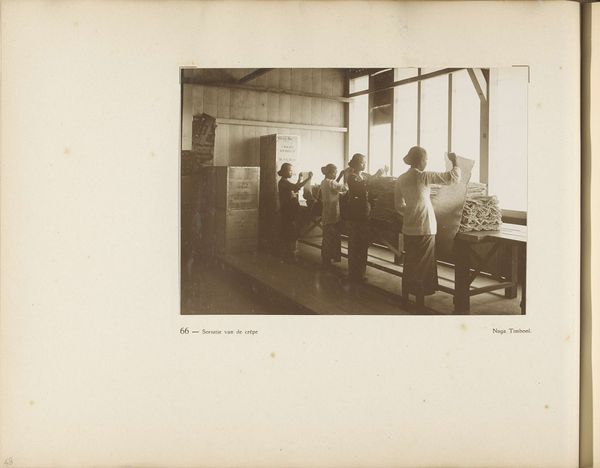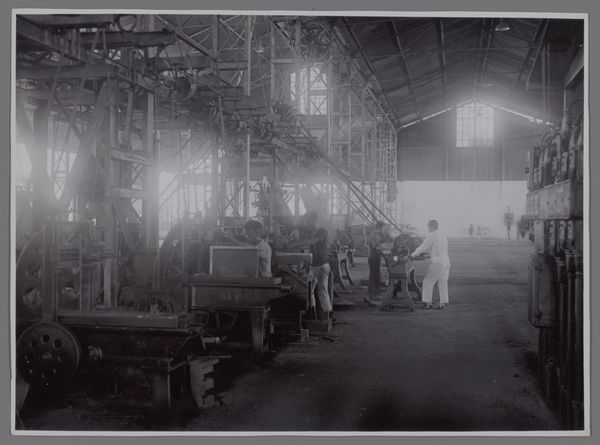
Mannen en vrouwen bezig met pakken en persen van tabak in een schuur op Sumatra c. 1900 - 1915
0:00
0:00
carljkleingrothe
Rijksmuseum
photography
#
asian-art
#
landscape
#
photography
#
cotton
#
clothing photo
#
realism
Dimensions: height 178 mm, width 285 mm
Copyright: Rijks Museum: Open Domain
Editor: This photograph, taken between 1900 and 1915 by Carl J. Kleingrothe, depicts workers processing tobacco in Sumatra. The stark black and white and the almost factory-like setting create a really striking, almost unsettling atmosphere. What do you make of this image? Curator: What strikes me most is the staged quality despite the realism tag. It appears the photographer has carefully positioned the workers. This composition invites us to consider how colonial power structures influenced the representation of labor and the perception of Southeast Asia during this era. Are these figures presented in a way that romanticizes or perhaps diminishes their work? Editor: I see what you mean. It feels like a glimpse into a very specific power dynamic. What about the architecture and the overall setting? Curator: The industrial architecture hints at the burgeoning colonial economy of the time. European powers sought to exploit resources like tobacco. This photograph, viewed within that context, becomes a document not just of labor, but of colonial extraction. What public narratives do you think were crafted around images like this at the time? Editor: Probably stories about progress and development, with very little attention paid to the people doing the work, beyond maybe seeing them as an anonymous workforce. Curator: Exactly. Consider how this photograph might have been exhibited, perhaps as a form of promotion of this industry or evidence of Dutch administration. These images helped solidify very particular notions of race, labor, and the global economy within European consciousness. Editor: That’s given me a completely different lens to look at the photo through. Seeing the photo as less a slice of life and more as a political statement. Curator: Precisely. Recognizing that images themselves are shaped by historical context allows for more informed interpretation.
Comments
No comments
Be the first to comment and join the conversation on the ultimate creative platform.
